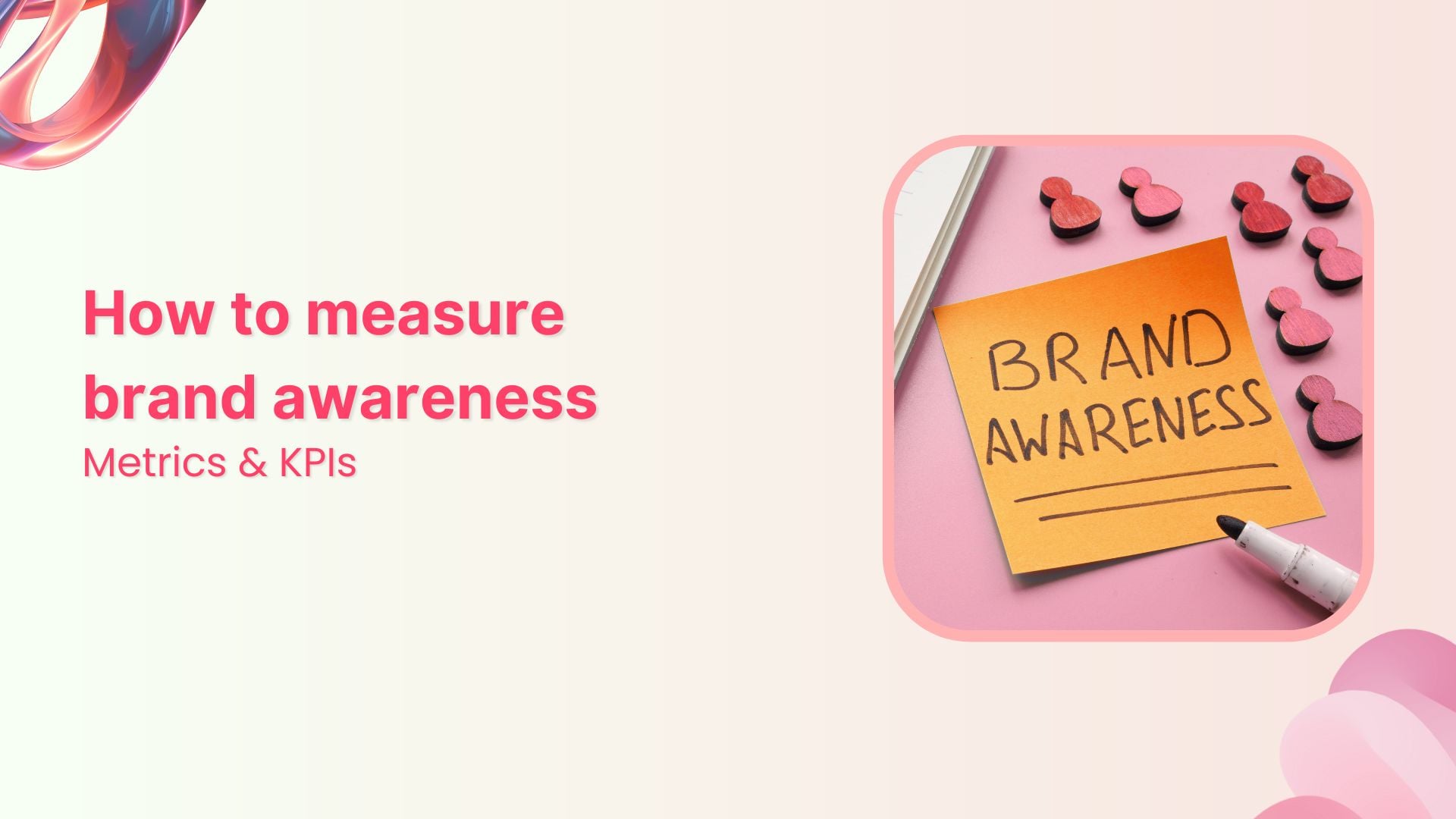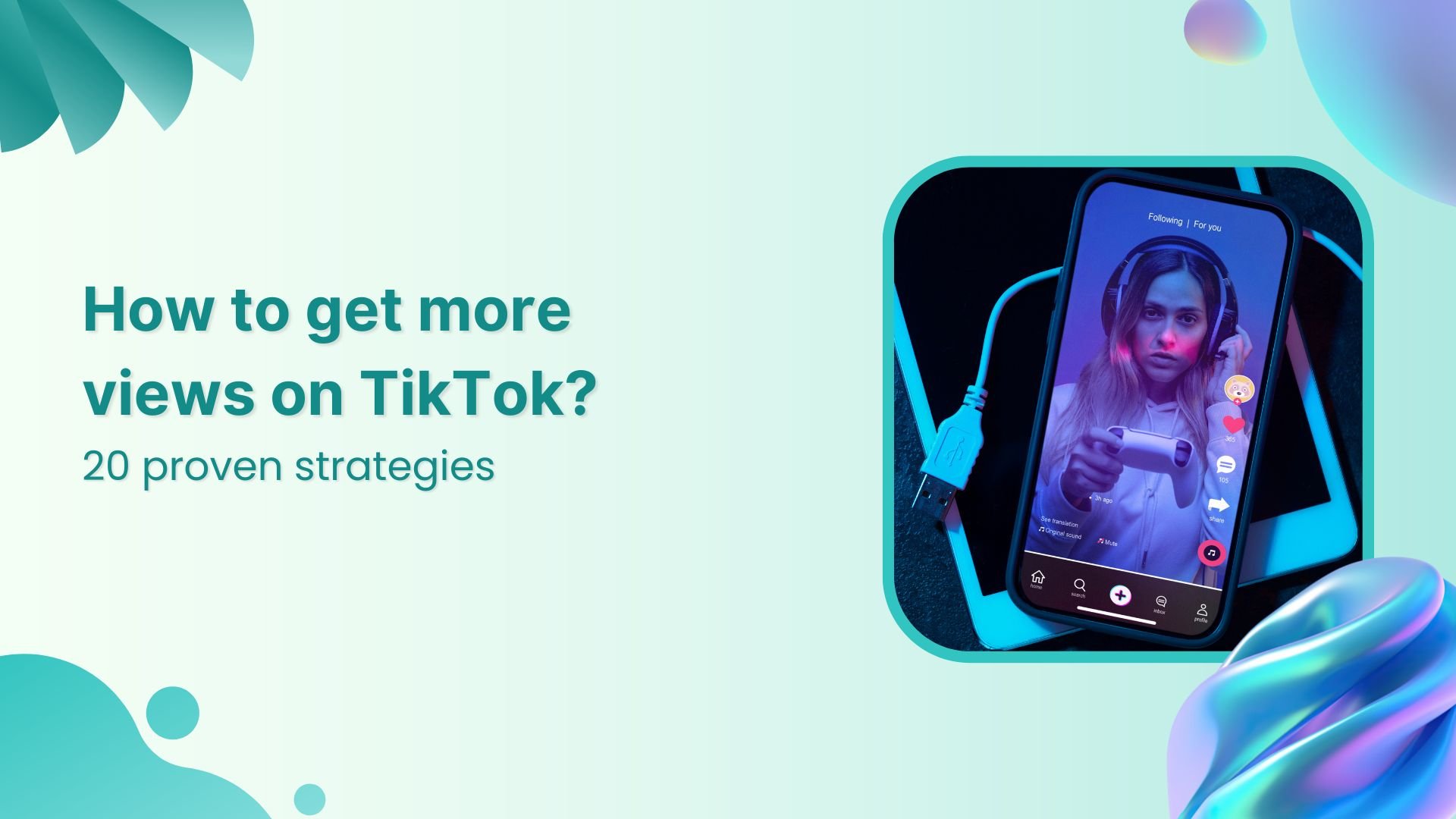Bulk-generate & schedule posts in seconds with Smart Scheduling. Try now!
From likes to leads: Enhancing ROI of social media
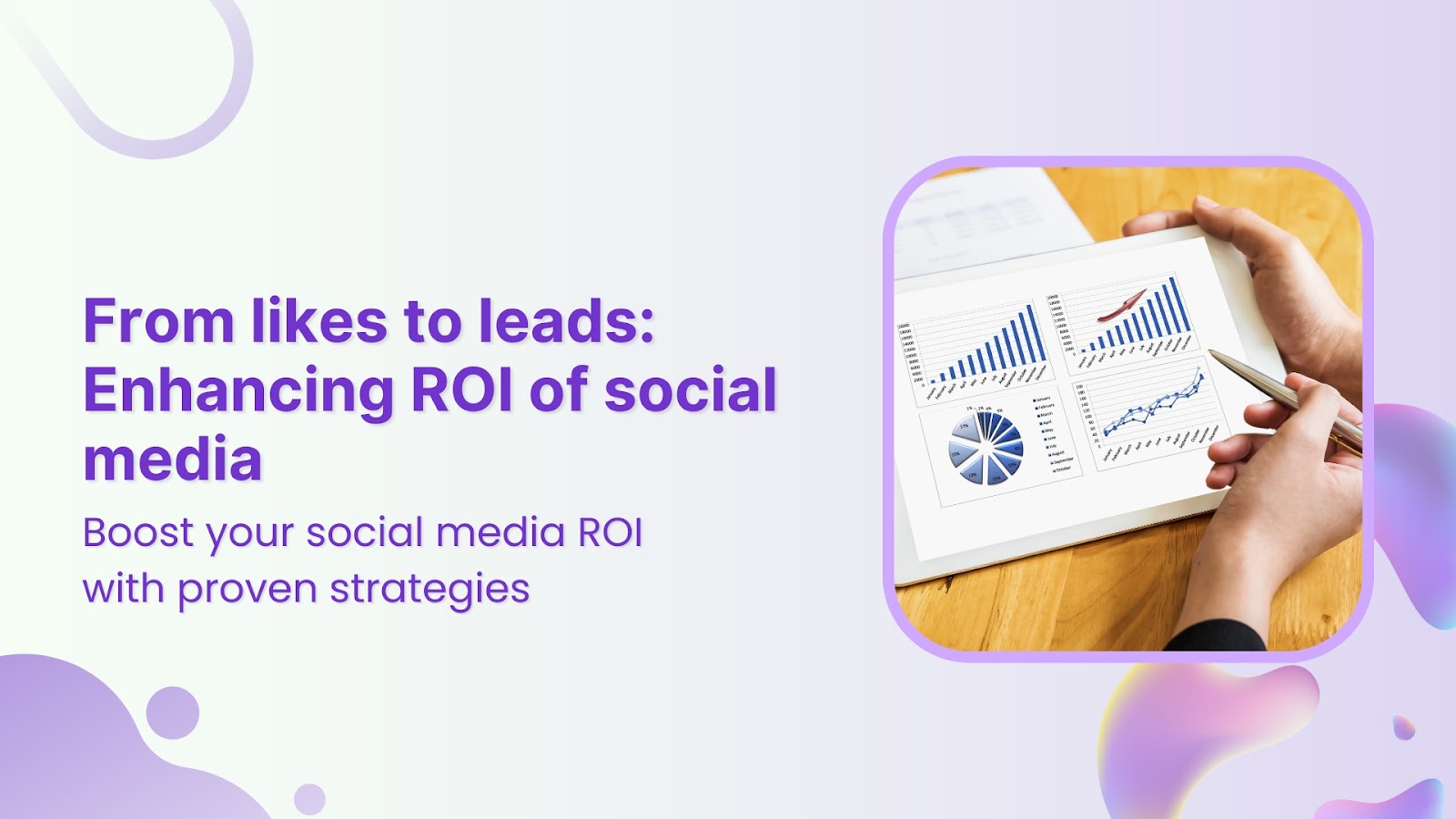
Are your social media efforts generating the results you want?
In today’s digital age, businesses have an unparalleled opportunity to connect with their audience on social media. But how do you turn those likes, shares, and comments into tangible leads and profits?
The key lies in understanding and enhancing your social media ROI. Studies show that the average ROI for social media ad campaigns is around 250%.
Additionally, companies that track their performance metrics see an average ROI of 96% from their social media marketing efforts. These impressive figures highlight the potential of social media as a powerful tool for business growth.
In this article, we’ll explore strategies to boost your social media ROI, helping you convert engagement into real business gains. From effective content creation to data-driven analysis and focusing on SaaS content marketing ROI, you’ll discover actionable tips to maximize your social media marketing success.
Simplified social media marketing for individuals & agencies.
Try ContentStudio for FREE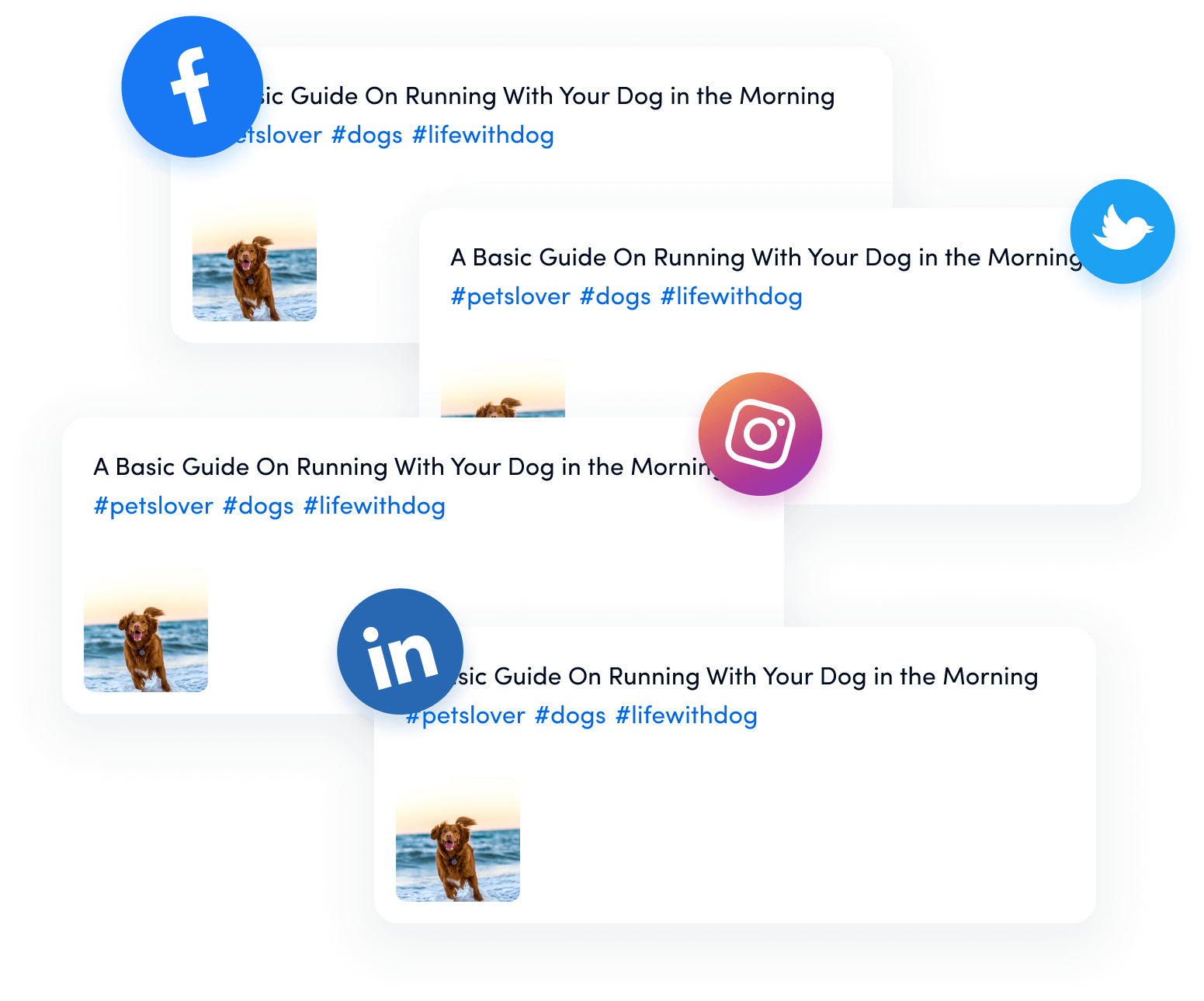
Related Read: How To Calculate Marketing ROI For Agencies?
What is the role of ROI in social media?
Let’s explore the role of ROI (Return on Investment) in social media marketing. Understanding social media ROI involves defining what ROI means in this specific context and why it is crucial for businesses.
ROI in social media measures the effectiveness of your investments in terms of the returns they generate. It helps businesses assess whether their social media efforts are yielding profitable results or if adjustments are needed.
Quantifying social media investment
To accurately measure the ROI of social media, it’s essential to break down the components of your investment.
- Ad spend
It includes the cost of running social media ads on platforms like Facebook, Instagram, Twitter, and LinkedIn. It’s a direct expense that needs to be tracked meticulously.
- Content creation
Creating engaging content requires time, effort, and resources. This includes costs related to graphic design, video production, copywriting, and any other creative work necessary to maintain an active and appealing social media presence.
- Tools and platforms
Businesses often invest in social media management tools like Contentstudio, analytics platforms, and scheduling software to streamline their efforts. These tools have associated costs that must be factored into the total investment.
Importance of measuring social media ROI
Measuring social media ROI is vital for several reasons. It helps businesses justify their social media spending, make informed decisions about future investments, and optimize their strategies for better performance.
To calculate the total investment, sum up all the costs associated with ad spend, content creation, and tools/platforms.
- Measuring returns
Returns from social media marketing can be both tangible and intangible.
- Monetary gains
Includes direct revenue generated from social media campaigns, such as sales from ads or promoted posts.
- Cost savings
Effective social media strategies can reduce customer service costs by providing quick and efficient support through platforms like Twitter and Facebook.
- Lead generation
Tracking conversions from social media traffic to leads and customers helps measure the effectiveness of campaigns.
- Brand awareness
Measuring reach, engagement, and sentiment helps you understand how well your brand performs and resonates with your audience.
- Calculating ROI
The formula for calculating the ROI of social media is:
Interpret the results by comparing positive and negative ROI. A positive ROI indicates that your social media efforts are profitable, while a negative ROI suggests spending more than you are earning, signaling a need for strategy re-evaluation.
KPIs in social media marketing
Key Performance Indicators (KPIs) are essential metrics that help businesses track and measure the success of their social media marketing efforts. KPIs provide valuable insights into how well your strategies are performing and whether they are achieving the desired outcomes.
They allow businesses to make data-driven decisions, optimize campaigns, and enhance their return on investment (ROI).
KPIs in social media marketing encompass various aspects of engagement, reach, and conversions. By monitoring these indicators, businesses can understand their audience’s behavior, preferences, and interactions with their brand.
This understanding is crucial for crafting effective content, improving customer engagement, and driving business growth.
KPIs also play a vital role in setting benchmarks and goals. They provide a clear picture of where your social media efforts stand compared to industry standards and competitors.
With this information, businesses can set realistic targets and measure their progress over time.
Here are different types of KPIs for social media marketing that we’ll discuss in detail.
- Engagement rate
Engagement rate measures the level of interaction your content receives from users, including likes, comments, shares, and reactions. A high engagement rate indicates your audience finds your content relevant and interesting.
This KPI is crucial for understanding how well your content resonates with your followers and can guide your content creation strategy to foster deeper connections and increase brand loyalty.
- Reach
Reach indicates the total number of unique users who have seen your content. It helps you understand the extent of your audience and the potential impact of your social media posts.
A higher reach means more people are exposed to your brand, increasing the chances of attracting new followers and potential customers. Tracking reach can help you identify the best times to post and the types of content that draw the most attention.
- Impressions
Impressions count the number of times your content is displayed, regardless of whether it is clicked. This KPI gives insight into the frequency with which your content appears in users’ feeds.
While high impressions are positive, combining this metric with engagement and click-through rates can provide a more comprehensive view of content effectiveness and audience interest.
-
Plan, schedule, share, and analyze content for 15+ social media channels.
Try ContentStudio for FREE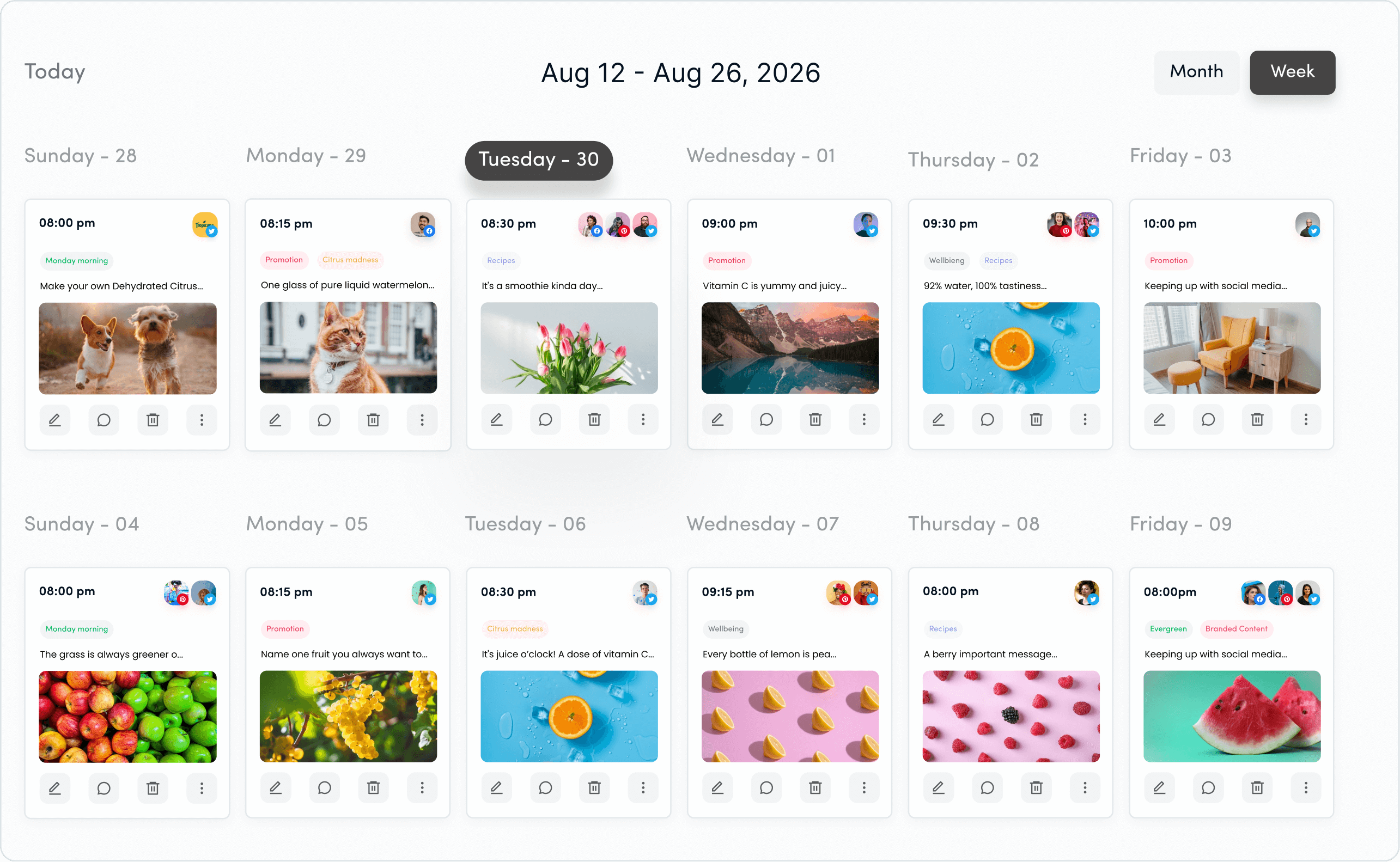
Follower growth rate
The follower growth rate tracks the increase in followers over a specific period. It reflects your brand’s growing popularity and can indicate the success of your social media campaigns.
A steady growth rate suggests that your content and engagement strategies attract new audiences, while a decline may signal the need for a revised approach.
- Click-through rate (CTR)
Click-through rate measures the percentage of users who click on a link in your post or ad. This KPI is crucial for assessing the effectiveness of your calls to action and the attractiveness of your content.
A higher CTR indicates that your audience is interested enough to take the next step, whether visiting your website, signing up for a newsletter, or making a purchase.
- Conversion rate
Conversion rate indicates the percentage of users who take a desired action after clicking on your content. This could include purchasing, signing up for a service, or filling out a form.
High conversion rates show that your content not only attracts clicks but also drives meaningful actions that contribute to your business goals.
- Customer acquisition cost (CAC)
Customer acquisition cost calculates the cost of acquiring a new customer through social media efforts. This KPI helps you understand the efficiency of your marketing spend.
By comparing CAC with a customer’s lifetime value, you can determine if your social media campaigns are cost-effective and sustainable in the long term.
- Return on ad spend (ROAS)
Return on ad spend measures the revenue generated from ad campaigns relative to the amount spent. A high ROAS indicates that your advertising efforts are profitable and effectively driving sales.
The KPI is essential for evaluating the financial success of your social media advertising strategies and optimizing budget allocation.
- Social share of voice (SSoV)
Social share of voice assesses the share of conversations about your brand compared to competitors. This KPI helps you understand your brand’s visibility and influence in the market.
A higher SSoV means more people are talking about your brand, which can increase brand awareness and credibility.
- Sentiment analysis
Sentiment analysis evaluates the tone and sentiment of user comments and mentions about your brand. This KPI provides insights into public perception and can help identify areas where your brand excels or needs improvement.
Positive sentiment can boost your brand image, while negative sentiment highlights areas requiring attention and improvement.
- Video views
Video views count the number of times your video content has been viewed. This metric is especially important as video content continues to gain popularity on social media platforms.
High video views suggest that your audience finds your video content engaging and worth watching, which can lead to increased brand awareness and engagement.
- Story engagement
Story engagement measures interactions with ephemeral content such as Instagram Stories or Facebook Stories. This KPI includes replies, shares, and sticker taps, providing insight into how engaging your short-lived content is.
High story engagement indicates that your audience actively engages with your stories, making this format a valuable tool for real-time marketing and audience interaction.
- Response time
Response time tracks the average time it takes for your brand to respond to user comments and messages. Prompt responses can enhance customer satisfaction and demonstrate that you value your audience’s interactions.
A short response time is often associated with better customer service and can lead to higher engagement and loyalty.
- Customer satisfaction score (CSAT)
Customer satisfaction score measures customer satisfaction based on feedback collected through social media. This KPI helps you understand how happy your customers are with your products or services.
High CSAT scores indicate that your customers are satisfied, which can lead to repeat business and positive word-of-mouth recommendations.
Strategies for enhancing social media ROI
Enhancing your social media ROI involves strategic planning and leveraging various tools and techniques. Here are some effective strategies to boost your returns on social media investment:
Here are some strategies for enhancing social media ROI:
- Measure your current social media ROI
Understanding your current social media ROI is crucial for optimizing future strategies. Define your ROI goals—sales, brand awareness, or engagement. Use analytics tools to track metrics like click-through rates, conversions, and revenue from social media efforts.
This data helps identify which campaigns and platforms are performing well and where adjustments are needed. Regularly monitor and analyze these metrics to refine your strategy and maximize ROI.
Example
Imagine a small fashion store using Instagram to boost sales. The aim is to increase revenue by 20% in six months and track clicks on product links, purchases from these clicks, and overall sales from Instagram.
They see which products (like dresses and shoes) and types of posts (carousel or single images) perform best. They focus on creating attractive carousels with clear details and prices. Their Instagram page has a consistent look with a set color scheme and their logo on every post.
They encourage customers to share photos wearing their clothes and repost these to build trust. Additionally, consider partnering with fashion influencers to promote your products.
They spend money on Instagram ads and adjust their strategy based on ad performance metrics. By constantly fine-tuning their strategy, they strive to achieve the highest possible level of success on social media.
Instagram Marketing
Schedule your Instagram posts, Reels, and Stories, and get recommended best time to publish for maximum engagement.
Get Started for FREE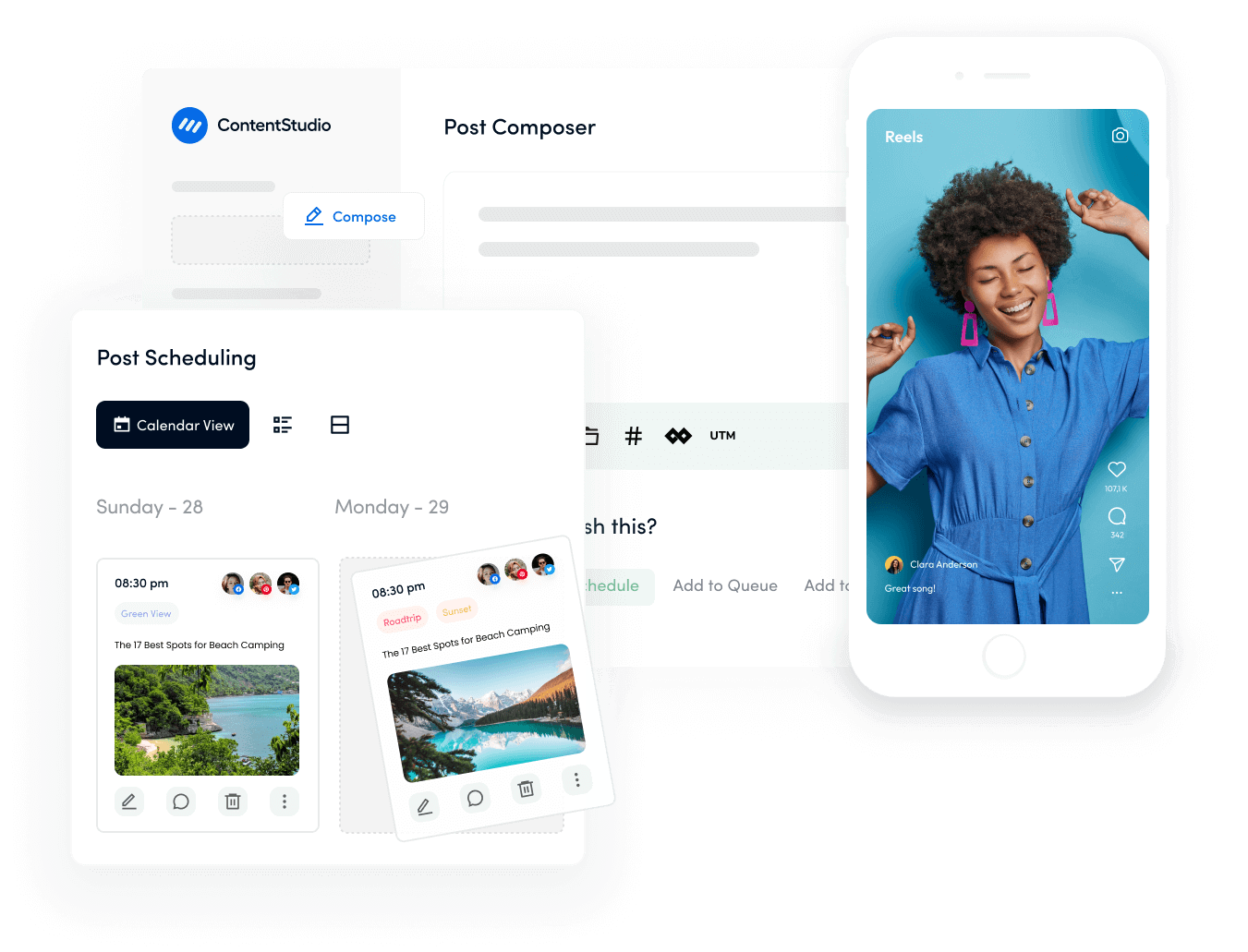
- Leverage user-generated content
Encourage customers to create and share content featuring your brand. User-generated content (UGC) builds trust and authenticity among your audience, driving higher engagement and conversion rates. Showcase UGC through social media posts, stories, and reviews to amplify its impact.
ContentStudio facilitates managing and amplifying user-generated content (UGC) across social media platforms. ContentStudio allows users to discover and curate UGC from various sources, including social media channels, blogs, and news sites. It also provides features for scheduling, publishing, and analyzing the performance of UGC campaigns.
Key features of ContentStudio:
- Content discovery
Identify trending UGC related to your brand or industry, which can enhance engagement and credibility.
- Content curation
Easily collect and organize UGC into meaningful campaigns that resonate with your audience, thereby boosting interaction and trust.
- Scheduling and automation
Streamline the process of publishing UGC across multiple platforms at optimal times to ensure maximum visibility and impact.
- Analytics and reporting
Measure the performance of UGC campaigns with detailed insights into engagement metrics such as likes, shares, and comments. This helps in refining strategies to improve ROI effectively.
- Leverage influencers
Partnering with influencers can significantly amplify your brand’s reach and credibility. Choose influencers whose audience aligns with your target demographic to ensure relevance and authenticity.
Collaborate on sponsored posts, reviews, or giveaways that promote your products or services. Influencers’ authentic endorsements can boost engagement and conversions, driving measurable ROI through increased brand visibility and consumer trust.
Example
Imagine Ren Skincare wants to boost awareness and sales for its Evercalm Rescue Mask. To do this, it teams up with The Influencer Marketing Factory to reach people interested in natural skincare.
Ren Skincare promotes the mask using TikTok’s beauty influencers, like Edward Zo. The influencers share honest reviews, highlighting the mask’s natural ingredients and benefits.
Their relatable content connects with viewers.
The campaign is a big success. It engages 50 million followers, gets 5.8 million views, and receives 492,000 likes and 2,200 comments. This leads to 58,000 clicks and 1,600 shares, greatly increasing the product’s visibility and market presence.
- Build brand loyalty with discounts and coupons
Utilize discounts and coupons on social media to attract and retain customers. Offer exclusive deals that incentivize purchases and reward loyalty. Promote these offers through engaging posts and targeted ad campaigns to increase visibility and drive conversions.
By fostering a sense of exclusivity and value, you can strengthen customer relationships and encourage repeat business, boosting ROI through increased sales and customer retention.
Example
Consider Ufesa, a home appliance brand looking to increase online sales through social media. They launched an online prize roulette promotion shared across their social channels. Followers visit a microsite where they spin the roulette for prizes.
Ufesa offers discount coupons as prizes, such as a generic code “SORPRESA10,” giving winners a 10% discount on purchases from their online store.
This campaign effectively drives traffic to their e-commerce platform and encourages purchases with enticing discounts. It demonstrates how Ufesa leverages social media to engage its audience and boost sales through interactive promotions using coupons.
- Build a solid affiliate marketing program
Developing a robust affiliate marketing program involves recruiting affiliates who can effectively promote your offerings. Offer competitive commissions and provide affiliates with marketing materials and support to maximize their impact.
Track affiliate-driven traffic and conversions using affiliate marketing platforms to measure ROI accurately. By incentivizing affiliates and optimizing performance, you can drive sales and enhance ROI through scalable partner relationships.
Example
Imagine a new website started in June 2020 to make money through affiliate marketing. The owner invested $10,296.68 in the website for the domain, hosting, content, and links.
They chose a good niche and bought a 15-year-old domain. By August, they had written and published 100,000 words of content. They also bought some links to help Google rank the site better.
In September, the site started ranking well. They added affiliate links from three eCommerce partners. In October, seeing good results, they planned another 50,000 words of content. By the end of the year, they noticed one affiliate partner was much better than the others, so they switched to Amazon affiliates.
In early 2021, they added more content and links, leading to their highest traffic and revenue in March. They also started using ads to make more money. Though traffic and income leveled off later, the site consistently made around $1,000 a month, and its estimated value was $35,000.
- Invest in social media ads
Allocate the budget to targeted social media advertising campaigns to reach specific audiences effectively. Utilize platforms’ targeting options and analytics tools to optimize ad performance. Monitor key metrics like click-through, conversion, and cost-per-acquisition to assess ROI.
By refining ad strategies based on performance data, you can maximize ad spend efficiency and achieve higher returns on investment through increased conversions and brand engagement.
Example
Snickers, the popular chocolate bar brand, leverages social media ads to engage its audience creatively. The ad uses its trademark yellow and brown colors to catch attention. The bright yellow text against a brown background stands out in users’ feeds.
Their campaign invites followers to share their “rookie mistakes” for a chance to win Superbowl tickets. This approach promotes interaction and creates excitement and anticipation among the audience.
By investing in social media ads that are visually appealing and offer valuable incentives like Superbowl tickets, Snickers effectively increases engagement and brand visibility. This strategy demonstrates how strategic ad investments can drive user participation and strengthen brand connections on social platforms.
- Laser-focus your targeting
Tailor your social media content and ads to specific audience segments based on demographics, behaviors, and interests. Use analytics to understand where your target audience spends time online and what content resonates most with them.
By delivering personalized messages and experiences, you can increase engagement and drive meaningful interactions. Laser-focused targeting ensures that resources are allocated efficiently, optimizing ROI by maximizing audience relevance and response.
Example
Nike, a top sports brand, refines its social media ads to reach specific groups. Using data, Nike finds its main audience: fitness fans aged 18-35 who are into yoga, running, and weightlifting. They often see these people on Instagram and YouTube, and they like workout and health posts.
Nike tailors its ads to fit these groups. It highlights yoga clothes, running shoes, and weightlifting gear. Its ads show famous athletes and fitness stars who love Nike products.
Nike boosts engagement and sales by focusing ads where their audience spends time. This smart move ensures Nike uses its ad money well, making ads that fit its fans and bring more people to its brand.
- Capitalize on shoppable features
Utilize social media platforms’ shoppable features to facilitate seamless shopping experiences. Enable direct purchases from posts, ads, and stories to reduce friction in the buying process. Implement product tags, shopping buttons, and integrated checkout options to streamline transactions.
By leveraging social commerce capabilities, you can capitalize on impulse purchases and drive higher conversion rates. This approach enhances ROI by increasing sales revenue and improving customer satisfaction.
Example
Lululemon, a popular athletic brand, uses social media to make shopping easier. It lets you buy directly from its Instagram posts, ads, and stories.
Lululemon tags products and adds shopping buttons. This means you can see something you like and buy it right away. They make checkout simple, so you can purchase quickly.
By doing this, Lululemon sells more and makes customers happier. It’s a smart way to use social media to boost sales and give people a better shopping experience.
Calculating ROI in different social media strategies
Calculating ROI (Return on Investment) in different social media strategies is crucial for understanding the effectiveness and profitability of your marketing efforts.
Here’s how ROI can be calculated for various social media strategies:
- Measure Your Current Social Media ROI
To calculate ROI, subtract the total costs incurred from the revenue generated through social media activities. Include costs like content creation, advertising spend, and tools used. Divide the net profit by the total investment and multiply by 100 to get the ROI percentage.
Simplified social media marketing for individuals & agencies.
Try ContentStudio for FREE
- Leverage Influencers
Calculate ROI by tracking metrics influenced by influencers, such as increased brand mentions, website traffic, or direct sales attributed to influencer collaborations. Compare the revenue generated against the cost of influencer partnerships to determine ROI.
- Build a Solid Affiliate Marketing Program
Measure ROI by tracking affiliate-generated sales and revenue against affiliate commissions paid out. Include costs of program management and tools. Calculate ROI as (Revenue – Cost) / Cost × 100.
- Build brand loyalty with Discounts and Coupons
Measure ROI by tracking coupon code usage or discount redemption rates. Compare the revenue generated from discount-driven sales against the cost of discounts offered.
- Invest in social media ads
Calculate ROI by tracking conversions attributed to social media ads. Measure revenue generated from ad-driven sales against ad spend. ROI = (Revenue – Ad Spend) / Ad Spend × 100.
- Leverage user-generated content
Track engagement metrics like shares, comments, and brand mentions associated with UGC campaigns. Measure the impact on website traffic or sales directly attributed to UGC to calculate ROI.
- Laser-focus your targeting
Calculate ROI by measuring targeted campaign conversion rates or engagement metrics. Compare the cost of targeted advertising or content creation to the revenue generated.
- Capitalize on shoppable features
Track sales directly attributed to shoppable posts or features on social media platforms. Calculate ROI by comparing sales generated against the investment in setting up and promoting shoppable content.
Measuring social media ROI across different digital marketing channels like SEO, social media marketing, and email marketing is essential for businesses to assess the effectiveness and profitability of their efforts.
Here’s how ROI can be measured in each of these areas:
Measuring ROI in SEO
ROI in SEO is typically measured by evaluating the revenue generated from organic search traffic against the costs incurred in SEO activities. Key metrics to consider include:
- Revenue from Organic Traffic
Calculate the revenue generated from visitors who found your website through organic search results.
- Cost of SEO Campaigns
Include expenses like SEO agency fees, content creation, link building, and SEO tools.
- Conversion Rates
Track conversions, from organic traffic to sales or leads.
- Customer Lifetime Value (CLV)
Consider the long-term value of customers acquired through organic search.
To calculate, use the formula for ROI:
Measuring ROI in Social Media Marketing
ROI in social media marketing involves assessing the return on investment from activities like sponsored posts, influencer collaborations, and social media ads. Key metrics include:
- Direct Sales and Conversions
Track sales directly attributed to social media campaigns.
- Engagement Metrics
Measure likes, shares, comments, and other engagement metrics.
- Brand Awareness
Evaluate the increase in brand visibility and mentions.
- Customer Acquisition Cost (CAC)
Calculate the cost per customer acquired through social media. To calculate ROI in social media marketing:
Measuring ROI in Email Marketing
ROI in email marketing is determined by analyzing the revenue generated from email campaigns compared to the costs associated with email marketing efforts. Key metrics to consider include:
- Email Campaign Revenue: Track sales directly attributed to email campaigns, including product purchases or subscriptions.
- Email Open and Click-through Rates: Measure engagement levels to assess campaign effectiveness.
- Subscriber Acquisition Costs: Include costs related to email list building and management.
- Lifetime Value of Subscribers: Consider the long-term revenue potential of subscribers acquired through email marketing efforts.
To calculate ROI in email marketing:
By consistently monitoring these metrics and adjusting strategies accordingly, businesses can optimize their digital marketing investments to maximize ROI effectively across SEO, social media, and email marketing channels.
Wrapping up
Enhancing social media’s ROI requires a strategic approach that aligns with your business goals. Businesses can significantly boost their social media ROI by measuring current performance, leveraging influencers, utilizing affiliate programs, and focusing on customer engagement. Investing in ads, shoppable features, and user-generated content further strengthens these efforts.
Tools like ContentStudio, with their robust analytics and automation features, can streamline and optimize social media campaigns, making tracking and enhancing ROI easier. Ultimately, a consistent and data-driven strategy is key to transforming social media engagement into tangible business growth.
FAQs
What is social media ROI, and why is it important?
Social media ROI (Return on Investment) measures the value generated from social media activities relative to the costs incurred. It’s important because it helps businesses understand the effectiveness of their social media strategies and optimize their efforts to achieve better results.
How do we measure social media ROI?
Track metrics such as click-through rates, conversions, and revenue generated from social media efforts to measure social media ROI. Compare these metrics to the costs incurred, including advertising spending, content creation, and tool subscriptions, to calculate the return on investment.
How do you evaluate marketing ROI?
Marketing ROI is evaluated by comparing the revenue generated from marketing activities to the costs spent. This involves tracking key performance indicators (KPIs) like sales growth, lead generation, and customer acquisition costs to determine the overall effectiveness and profitability of the marketing strategies.
What is the KPI in marketing ROI?
Key Performance Indicators (KPIs) in marketing ROI include conversion rates, customer lifetime value, return on ad spend, and lead generation rates. These KPIs help measure the success of marketing campaigns and their contribution to the company’s financial goals.
How can ContentStudio enhance social media ROI?
ContentStudio enhances social media ROI through its analytics and automation features. It helps streamline content planning, publishing, and performance tracking, enabling businesses to optimize their social media strategies for better results.
Recommended for you
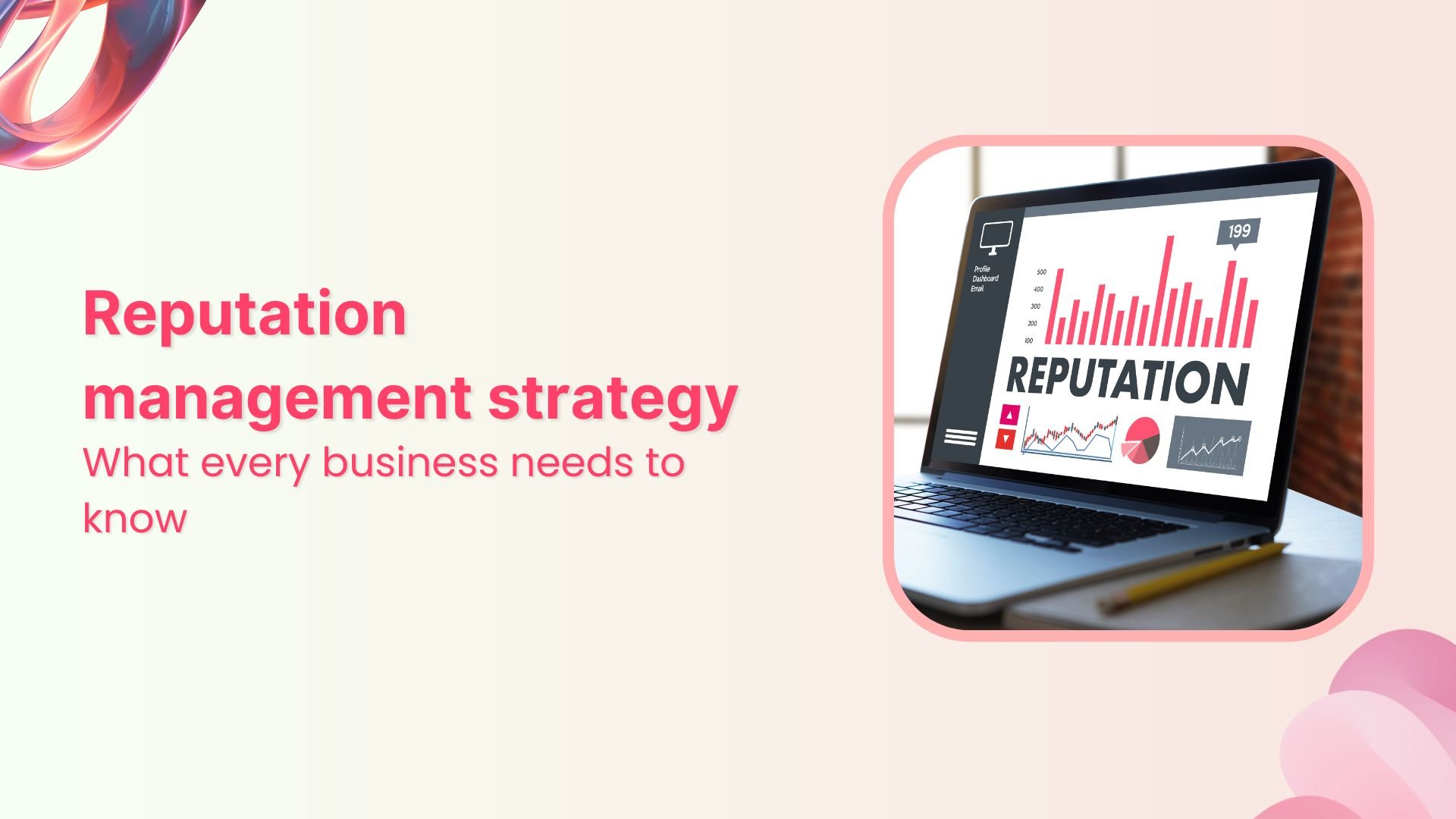
Reputation management strategy in 2026: What every business needs to know


Powerful social media management software
14-day free trial - No credit card required.

